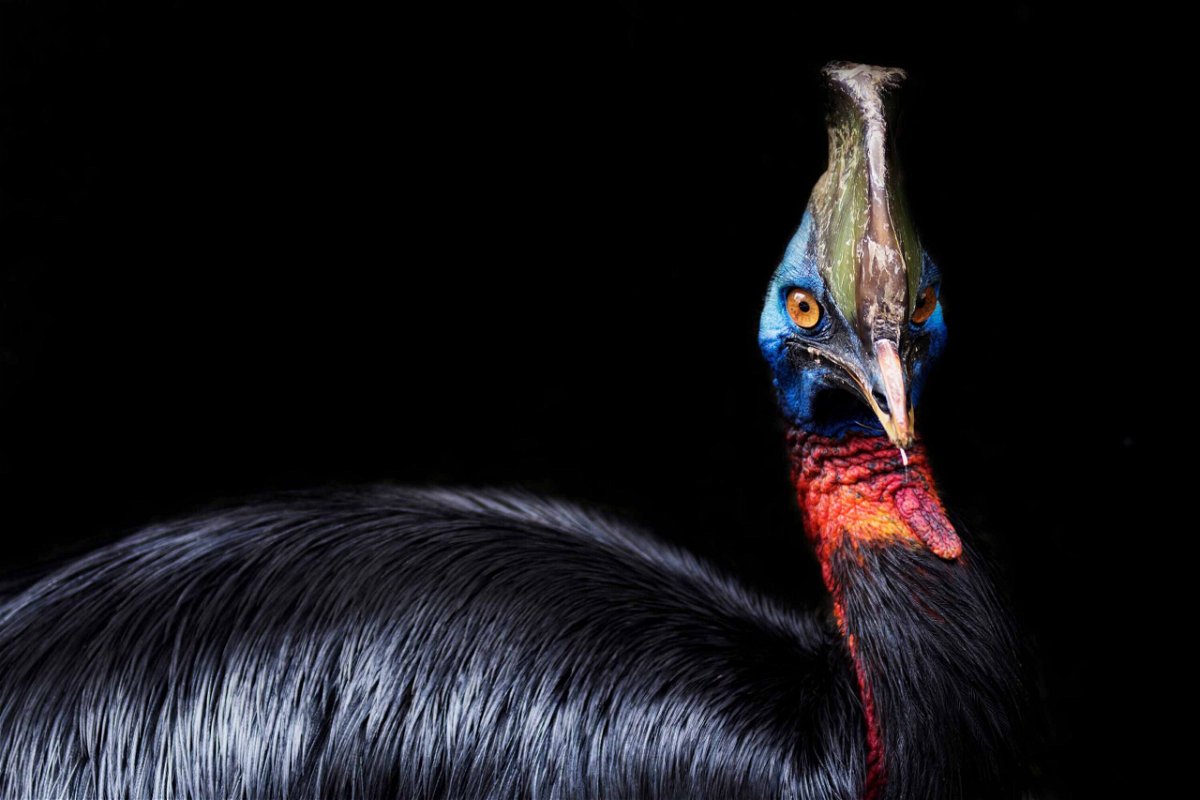Mars robots take cruise control during solar event

A cassowary can be aggressive
By Ashley Strickland, CNN
Everyone needs a break.
My technology-cluttered surroundings were replaced recently with mountain trails and a lake where sunlight scattered like diamonds.
Standing at the base of two converging waterfalls, the fine spray of mist on my face, I was reminded that natural marvels are never out of reach — we just forget to seek them out.
Ferns grew sideways from walls of rock, dancing in the breeze generated by the powerful roaring water. The words of John Denver’s “Take Me Home, Country Roads” came to mind: “Life is old there, older than the trees, younger than the mountains, growin’ like a breeze.”
Spending time in nature is good for us (and kids, too). I hope you can take some time for yourself soon to explore the path less traveled, and may the journey bring you clarity, joy and rejuvenation.
And taking a break isn’t just for humans — something similar is about to happen on Mars.
Solar update
When the sun gets in between Mars and Earth, NASA experiences a communication gap with its robotic explorers at the red planet. The Mars solar conjunction takes place between October 2 and 16, and the event happens for a couple of weeks every two years.
But that doesn’t mean that all exploration stops — instead, the Martian rovers and orbiters operate on simplified cruise control.
Consider it a two-week Martian summer break for the unsupervised robots, and a bit of a rest for their busy teams on Earth.
Once this brief respite ends, the Perseverance rover will attempt to collect its next sample and Mars helicopter Ingenuity will go for its 14th flight.
We are family
A 40,000-year-old chamber has been discovered inside a Gibraltar cave, and it could reveal the lifestyles and mysterious rituals of the Neanderthals who once lived there.
The 42-foot-deep (13-meter-deep) chamber includes the fossil remains of predators as well as scratch marks made by some carnivore with an impressive set of claws.
Clive Finlayson, director and chief scientist at the Gibraltar National Museum, said entering the cave gave him goosebumps. “How many times in your life are you going to find something that nobody’s been into for 40,000 years? It only comes once in your lifetime, I think.”
Wild kingdom
It’s often called the world’s most dangerous bird: Aggressive and territorial, with dagger-like toes, the flightless cassowary isn’t a bird you’d want to come up against.
Early humans in New Guinea actually raised cassowary chicks long before they had chickens, new research suggests.
Scientists studied thousands of fossil eggshells ranging from 18,000 to 6,000 years old. (Chickens were domesticated about 9,500 years ago.)
In other ancient discovery news, a rare fossil of a 25 million-year-old eagle that hunted koalas was found in South Australia. And the “horned crocodile-faced hell heron” is one of two new dinosaur fossil findings from a popular tourist destination many call “Dinosaur Island.”
Consequences
The striking ivory-billed woodpecker is no longer with us.
It’s just one of more than two dozen species of birds, fish and other wildlife set to be declared extinct and removed from the US endangered species list.
Human activity led to the decline of these species, and their disappearance is a wake-up call as other animals continue to be threatened by habitat loss and factors of the growing climate crises.
Almost 3 billion birds have been lost in North America since 1970, and nearly two-thirds of North American birds will go extinct if global warming continues. Fortunately, there are ways we can help our feathered friends.
Across the universe
Lucy is about to be in the sky with diamonds. A new NASA spacecraft that will observe mysterious asteroids is getting ready to leap off the launchpad on October 16.
A 12-year mission will send the Lucy spacecraft on an epic flyby of eight never-before-seen asteroids.
The Trojan asteroids, which borrow their name from Greek mythology, orbit the sun in two swarms — one that’s ahead of Jupiter and a second one that lags behind it.
These asteroids are remnants from the early days of our solar system. Lucy’s observations could help us learn how the solar system formed 4.5 billion years ago and why the planets ended up in their current spots.
Take note
Keep an eye out:
— Some of the greatest scientific minds will be honored when Nobel Prizes are announced next week. Here are some award-worthy candidates who could win.
— The BepiColumbo mission flew within 124 miles (200 kilometers) of Mercury on Friday, the first of six flybys before the spacecraft goes into orbit around the planet in 2025.
— This Scottish gin benefits our climate in three ways — and it’s made from a very unlikely ingredient.
Like what you’ve read? Oh, but there’s more. Sign up here to receive in your inbox the next edition of Wonder Theory, brought to you by CNN Space and Science writer Ashley Strickland, who finds wonder in planets beyond our solar system and discoveries from the ancient world.
The-CNN-Wire
™ & © 2021 Cable News Network, Inc., a WarnerMedia Company. All rights reserved.


